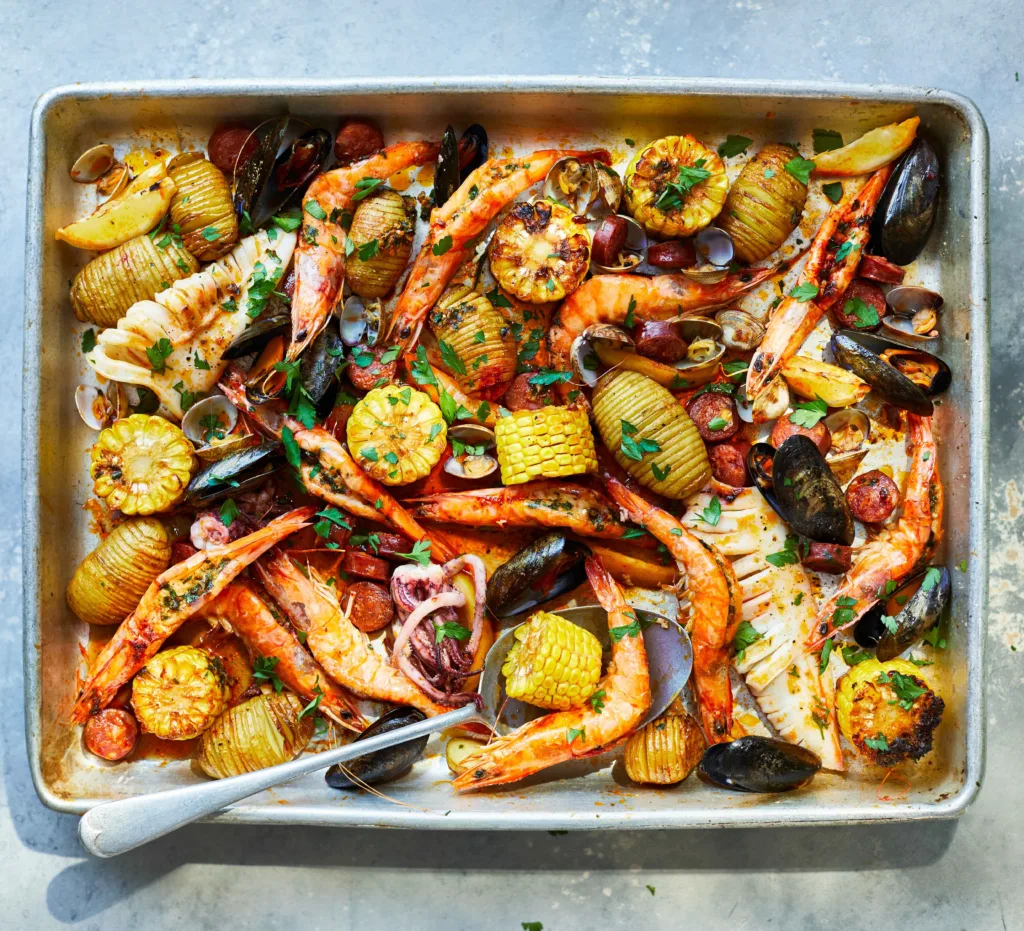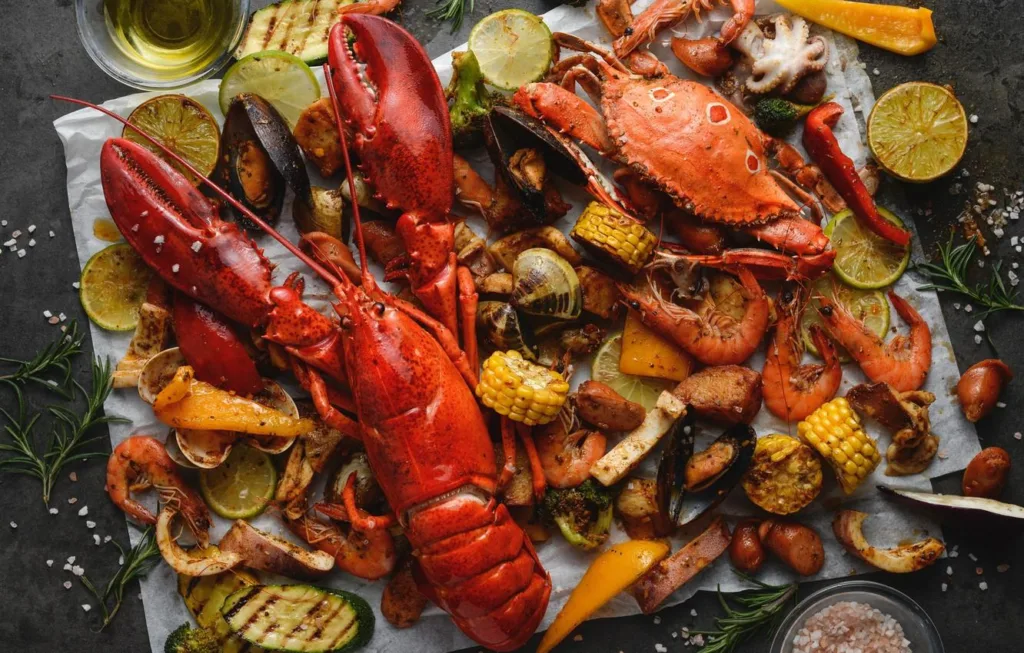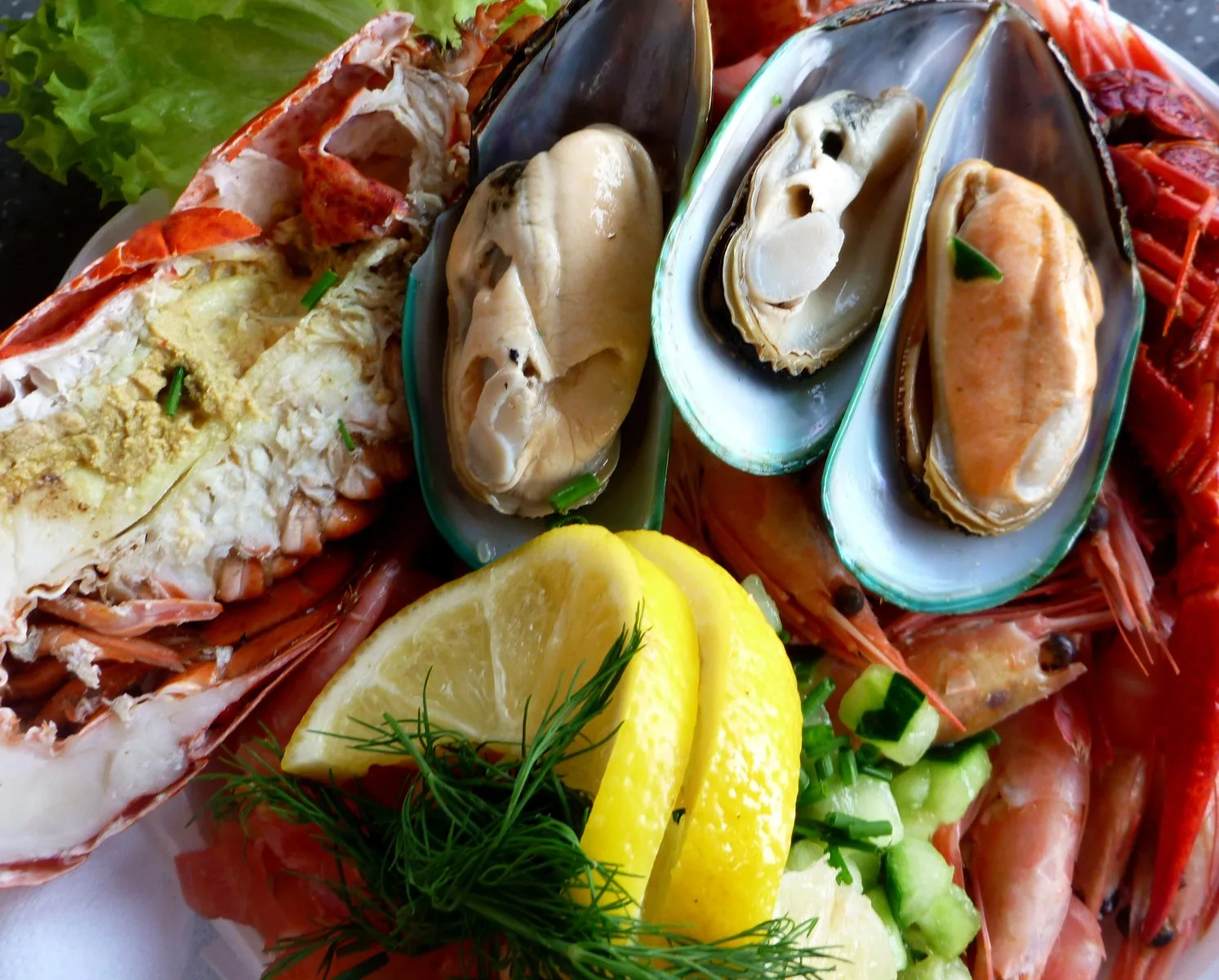The Ocean’s Secret to Shedding Pounds
With the rise of fad diets and weight loss gimmicks, it’s easy to overlook one of nature’s best kept secrets for shedding pounds – seafood. This powerhouse food from the ocean offers a nutritional profile almost unrivaled for supporting weight loss efforts. Let’s dive in and explore the many benefits seafood offers for dropping excess weight and achieving better health.
The Seafood Advantage
Seafood delivers an impressive lineup of nutrients that specifically target the issues contributing to weight gain. With high-quality protein, essential fatty acids, and a rich vitamin and mineral content, seafood provides a triple threat against added pounds.
First, seafood is packed with satisfying protein but contains only traces of the unhealthy fats found in fatty cuts of meat. A 3-ounce portion of salmon contains over 20 grams of protein with minimal saturated fat – a ratio almost ideal for weight loss needs. Protein provides the essential building blocks for preserving and building calorie-burning muscle mass while avoiding fat storage. Increasing protein intake is a proven way to boost metabolism, control hunger, and support fat burning.
Additionally, seafood contains powerful omega-3 fatty acids. These healthy fats provide extensive benefits for weight management. Studies show omega-3s improve insulin sensitivity, reduce inflammation, and optimize fat-regulating hormones. In doing so, they make it easier for the body to release stored fat and prevent excess fat accumulation. Omega-3s are also linked to greater feelings of fullness. This results in consuming fewer daily calories without constant hunger or cravings.
Finally, seafood delivers weight-loss boosting vitamins and minerals including iodine, selenium, zinc, iron, and vitamin D. This all-star lineup supports thyroid function, immune health, hormone activity, and energy production – all factors related to a properly functioning metabolism. With its unique blend of protein, omega-3s and micronutrients, seafood offers the ultimate advantage for shedding pounds.

Understanding Seafood and Metabolism
So how exactly does seafood impart its weight-loss magic? The answer lies in how it optimizes metabolism. Metabolism is the process by which the body converts food and drink into energy. A faster metabolism means more calories burned each day. Seafood contains several compounds proven to increase metabolism through different mechanisms.
The high-quality protein found in seafood enhances metabolism in several ways. Protein requires more energy for the body to digest compared to fats or carbs. Your body can burn up to 30% of protein calories just through the digestion process. Protein also helps maintain and build calorie-burning lean muscle mass. The more muscle you have, the more calories your body will burn daily at rest. Furthermore, protein is the most satiating macronutrient, keeping hunger at bay and reducing calorie intake.
Omega-3 fatty acids also boost metabolism via a process called diet-induced thermogenesis. This refers to the energy spent digesting food and converting it to energy. Omega-3s increase diet-induced thermogenesis compared to other fats, ramping up calorie expenditure. They also optimize fat-burning hormones for greater breakdown of stored fat.
These metabolic benefits make adding more seafood a powerful tool for weight management. In one study, adults following a calorie-restricted diet including salmon lost over 2 pounds more than the control group in just 4 weeks. The seafood group also had greater reductions in waist circumference, demonstrating the ability to preferentially target abdominal fat. Other research finds similar improvements in body composition and weight loss markers among people consuming more fish.
Seafood’s Satiety Power
In addition to firing up your metabolic engine, seafood can also flatten your appetite. Protein tops the charts for improving satiety – the feeling of fullness after eating. In fact, studies show high protein foods suppress levels of the hunger hormone ghrelin up to twice as long as high carb foods. This leads to consuming fewer calories without the tortured feeling of restriction.
Seafood provides this protein punch in spades. A study comparing the effects of beef, chicken, and fish found that fish had the greatest impact on satiety markers. Participants reported feeling fuller and less hungry after the fish meal compared to red meat or poultry. The satiating effects lasted up to 2 hours longer with fish compared to the other proteins.
Researchers believe omega-3 fatty acids may also contribute to seafood’s appetitite-squashing powers. Studies find omega-3 supplements increase release of satiety hormones like CCK while reducing levels of the appetite trigger grehlin. This hormonal response helps explain why omega-3 intake is linked to smaller meal portions and decreased snacking.
Taking advantage of seafood’s satiety effects can make a big difference in your daily calorie intake. A meal plan featuring salmon, tuna, and shellfish will help crush cravings and control portions effortlessly. This allows you to eat less without feeling deprived – a key factor for long-term weight management success.

Seafood in Place of Red Meat
In addition to what seafood adds to your diet, it also allows you to reduce intake of less waistline-friendly foods like red meat. Beef, pork, and lamb provide protein but can wreak havoc on heart health and weight when consumed in excess. Ounce for ounce, seafood provides the same satisfying protein but with a fraction of the unhealthy saturated fat found in red meats.
Studies consistently show that swapping seafood for red meat provides significant benefits for weight loss and heart health. One study followed middle-aged overweight adults for 8 weeks. One group was counseled to eat more fatty fish while reducing red meat intake. The other group did not change their diet. After 8 weeks, the seafood group lost an average of 2 pounds more than the control group. They also had greater reductions in triglycerides and blood pressure.
Further research demonstrates similar effects. A daily serving of fish in place of red meat for 4 weeks resulted in lower LDL cholesterol and greater weight loss compared to red meat. Even choosing shellfish over red meat three times a week can significantly improve cholesterol and triglyceride levels according to another study.
The benefits continue with long term changes. Postmenopausal women who ate canned tuna five times per week for 8 months lost twice as much weight and body fat as those who ate it once per week. Substituting seafood for red meat provides a double win for heart health and waistline reduction.
Making the switch from red meat to seafood is easy with a little creativity. Canned tuna works beautifully in place of ground beef for dishes like tacos, chili, and pasta sauce. Crab cakes can take the place of hamburgers or meatloaf. Grilled shrimp skewers will satisfy just like chicken or steak. With some simple substitutions, you can still enjoy delicious high protein meals while promoting fat loss.

Navigating Seafood Choices
While seafood offers tremendous potential to facilitate weight loss, some options are better than others for keeping calories and toxins low. Here are some tips for choosing the healthiest seafood options for your needs:
- Focus on fatty fish – Varieties like salmon, mackerel, herring, trout, and sardines contain the most beneficial omega-3 fats for weight management. Aim for at least two servings per week.
- Choose wisely for mercury – Larger fish accumulate more mercury. Opt for small fish like sardines or wild caught salmon to limit exposure. Avoid high mercury picks like swordfish, tilefish, shark and king mackerel.
- Go wild caught – Farmed fish are higher in inflammatory omega-6 fats. Prioritize wild caught varieties whenever possible.
- Think small – Smaller species like anchovies, mussels, and oysters tend to be low calorie options. Load up on these high protein, low fat picks.
- Check calories – Lobster, scallops, and shrimp are higher in calories than finfish. Enjoy them in moderation if watching your weight.
- Read labels for sustainability – Look for approved labels from the Marine Stewardship Council, Aquaculture Stewardship Council, or Monterey Bay Seafood Watch.
Following these simple guidelines ensures you maximize the weight loss benefits of seafood while minimizing risks.

Cooking Seafood for Weight Loss
Preparation matters when harnessing seafood’s full power for shedding pounds. Healthy cooking methods allow you to avoid excess calories from oils, breading, sauces, and salts. Here are some tips for keeping seafood light yet delicious:
- Grill it – Grilling requires minimal added fat. It adds great flavor through light charring. Salmon, shrimp, scallops, and even thick fish fillets like cod cook quickly on the grill.
- Roast it – Roasting on a baking sheet in the oven lets fat drip away from fish. Use non-stick spray instead of oils to cut hundreds of calories.
- Steam it – Steaming is one of the healthiest cooking methods. It retains moisture perfectly without adding extra oils or fat.
- Skip the batter – Breaded seafood packs excess carbs and fat. For lighter options, choose grilled, baked, or sautéed preparations.
- Watch the sauce – Sauces and dressings quickly sabotage seafood’s leanness. Lemon or spices add plenty of flavor without the calories.
- Go easy on salt – Packaged seafood often contains tons of sodium. Prepare homemade versions instead and control the salt.
With the right cooking techniques, you can create amazing seafood meals that nourish your body, not your waistline. Skinnytaste, Eating Well, and Cooking Light offer wonderful recipe ideas perfect for any weight loss diet.
Dive Into a Healthier You With Seafood
Seafood provides an amazing ally for dropping excess pounds thanks to its stellar nutrition profile. With metabolism-boosting protein, anti-inflammatory omega-3s, and an array of essential nutrients, it offers everything needed to optimize fat burning and curb cravings. Swapping seafood for red meat also improves heart health markers while encouraging sustainable weight loss. Armed with a little knowledge, it’s easy to incorporate seafood into any diet plan for amplifying results. Don’t miss out on nature’s secret for shedding pounds and achieving better health. Dive into seafood’s many benefits and embark on the path to a slimmer, healthier you.
Don’t miss out on more enlightening articles about food, nutrition, health, wellness, and weight loss. Subscribe to our free newsletter now to stay on the path to a healthier you.
Thank you for reading this post, don't forget to subscribe to our free newsletter
!
